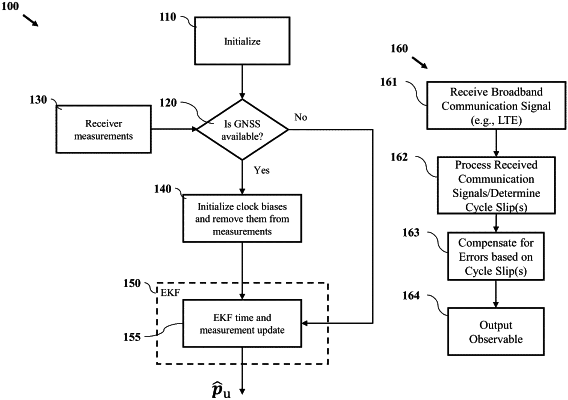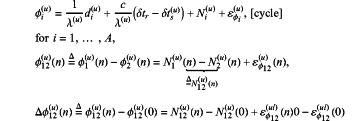| CPC G05D 1/101 (2013.01) [G01S 5/145 (2013.01); G06F 17/18 (2013.01)] | 18 Claims |

|
1. A method for navigation using cycle slip detection, the method comprising:
receiving, by a device, a broadband communication signal;
processing, by the device, the broadband communication signal based on a navigation framework to determine at least one carrier phase measurement;
compensating, by the device, for at least one error of the at least one carrier phase measurement using at least one detected cycle slip, wherein compensating for at least one error includes removing an effect of a receiver clock bias on the at least one carrier phase measurement relative to a reference transmitter within a plurality of transmitters by detecting the occurrence of cycle slips according to:
 wherein A is a number of antenna ports of the LTE SDR, and wherein cycle slips occur when Δϕ12(u)(n) exceeds a threshold;
determining, by the device, a position for the device based on the at least one carrier phase measurement and the at least one error; and
outputting, by the device, a navigation observable based on the position determined for the device.
|